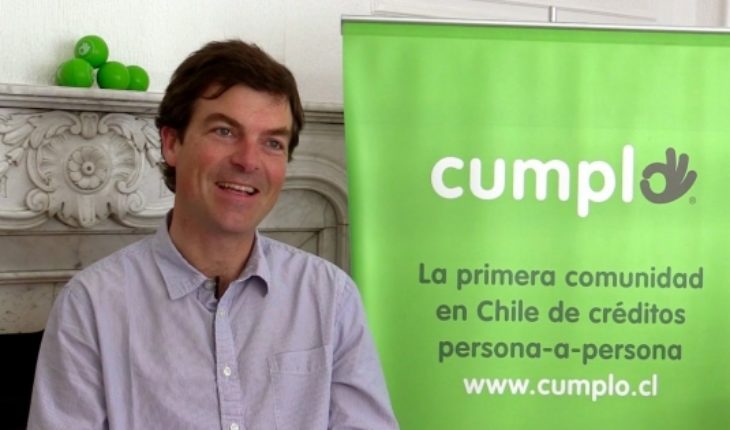since its inception has been resisted by the formal financial system. It was known that the Superintendency of banks and financial institutions (Sbif), just started its operations in 2012, he denounced to qualify for breaking the bank draft. Is that it is not a Bank, less an authorized person for the acquisition of third-party resources and the granting of credits, but has persisted in this exercise.
He was born as a platform that sought to decentralize the banking system lending practices. A technology service that would unite tips: people willing to lend money for one certain rate, to others who might have access to a possibly better interest. Any loan could never be superior to that of the rate maximum conventional (TMC).
They departed in 2012 with 93 credits with transactions for $25 million and by 2015 had 1,519 credits operated with amounts that exceeded $590 million. Last year, $107 million and this 2018 were financed, the figure could exceed $200 million.
In parallel they deregulated. Earlier this year they entered Mexico and today it aims to settle in the United States. But the issue has not been easy, mainly because of the dilemma regulatory qualify, specialist in the country’s largest crowdfunding and which is already yielding their first alert lights.
It is that these days there are a group of 37 people who lost $40 million, capital deposited in two loans of $20 million to a company that fell into default. A case that would be a reality isolated, whereas its rate of default – as they explain – 0.8%, although however again put on the table free regulatory who operates a company that facilitates the granting of credits to meet without provisionarlos and endorsing the customer risk.
I am not provided credits awarded, since it delegates at the investor responsibility for choosing its debtor, an issue that bothers some of those who have been affected, accusing skills to finance are limited, and it is easy to fall in the error. In this regard, however, the company explains that you delivery the greater amount of information necessary for an investor to evaluate if you want to finance a debtor or not, for example, the number of credits requested by company, average days of mora, many are assets, many paid and how many in mora, rates that has been financed, among others.
The problem is that it would be a company that was financed with loans from investors to meet and after a month you would have broken, according to these investors to the counter markets.
“I wonder if I am not doing good things and not investigated well before publishing these credits in the platform. How in 30 days the company is in bankruptcy? Most likely, it was bankrupt already when it requested appropriations. We are 37 investors that we are affected and I am not transparent names or data so that we can not contact us, join us and see if we can do something. I lost $40 million, there are two credits of $20 million each one, $40 million just in this case. “There are many more who have also lost because simply the enterprises do not pay, that should also be public”, says one of the affected investors.
The markets desk consulted to qualify on their models of analysis of risk, among other issues. In parallel, however, the cases in civilian courts give that there is the risk of cessation of payment of debtors.
This year alone there are some 90 causes in which mostly fulfill demands the recovery of their placements. Others, one minor figure, has to qualify as a respondent by certain creditors. One of the best-known cases was at the end of October, staged by the company with the University of Playa Ancha, Brawl posted in the third/Pulse: “another Chilean University is on the verge of collapse by their million-dollar debts,” read the article. The credit was for $211 million and is already paid. That University officials were surprised by the aggressive strategy of recovery meet, because – as stated – the House of studies had resources to get out of that credit, but were internal procedures that prevented to perform them.
Regulatory vacuum?
I do have ambitious facing its internationalization, while it continues to grow with strength at the local level. It currently has more than 5 thousand investors and 1,600 customers. Also in the third/pulse, the company made its projections in terms of credits. By 2020, they shuffled loans by $1,000, according to its founder, Nicolás Shea. A growth which, however, may be under a new regulatory umbrella.
“Any business activity must be framed within the legal system, which in turn means that a business not only should be evaluated from the economic perspective, but also legal (…). Which corresponds to the Superintendency, article 39 of the General banking law States that if this takes knowledge of history that may be constitutive of the crime of invasion of the banking activity should report to the public prosecutor’s Office. As well, and as it was public knowledge, the SBIF filed a complaint with the Prosecutor Metropolitan East in 2012 so look into whether there was a breach of this legal provision by Cumplo.cl”, says the Sbif.
The denunciation of the regulator did not prosper, because I am won in legal arguments. The company did not understand how the “peer to peer lending” would be a discussion regulatory to a criminal complaint, and in the midst of this conflict commissioned a report to the Economist Victor Vial, which concluded that I am does not capture money, no intermediate it which provided him as are the people.
Now, however, the Commission for the financial market (CMF) is working on regulatory matters. A few months ago, he raised a work table to create a possible law Fintech and is expected in the near future to finish a document containing the first pillars of regulation Fintech in Chile.
I am participated in this Panel, in circumstances that the regulator has been visiting them constantly in the past seven months, in order to understand their business model. The company intends, moreover, to collaborate in the design of measures, and in assessing the impact of regulatory which would have this new regulatory framework.
The CMF has quite advanced studies of crowdfunding companies and, in general, the fear of these companies always points to a client finish ripping everyone off. Therefore, that meet says operate with a code of self-regulation demanding, in an effort to ensure that incentives are well positioned.
The model, do an enigma?
Consulted by this means, the company gave details on how it works. The main thing, they say, is have well aligned incentives.
“Firms, we only charge them in the event that the company finance and rate benefits which borrow only the investor, because they are those who earn interest and mulberry, in case if any. On the investor side, there is a fee to make the investment and the recovery of our Commission, is performed in the case that investment recovers. “In case necessary actions of payment outside the normal process of collection, associated costs assume them us if it is that it gets out of the recovery money”, explains.
I am not provided credits awarded, since it delegates at the investor responsibility for choosing its debtor, an issue that bothers some of those who have been affected, accusing skills to finance are limited, and it is easy to fall in the error. In this regard, however, the company explains that you delivery the greater amount of information necessary for an investor to evaluate if you want to finance a debtor or not, for example, the number of credits requested by company, average days of mora, many are assets, many paid and how many in mora, rates that has been financed, among others.
Your customer profile is small businesses that have been at least one year to operate, billed over 10 million monthly and have as clients companies larger than them. All already banked.
What wins qualify? Only if the funding, meet cobra 0,595% per month of the total requested amount for credits that are backing a Bill. Investors are charged a fee for use of platform when they make investment (this covers transaction costs) and the equation is a 0.005%, multiplied by the amount invested and the term. Then “If you invest 2 million dollars in credit to 60 days, the payment will be 6 thousand pesos. “When to recover the investment, and only if he recovers, charge 0.1% capital x x”, says the company.
“In 2017 we got for the first time our operational breakeven, so we are extremely proud. However, given our purpose and our conviction that it is extremely necessary to grow at the highest possible speed for the sake of having a financial system more fair in Latin America, we have increased our investments, which has required new shareholders to finance them, what you see in our entry into the market at the beginning of the 2018″, explains the company.
The main partner of the company is Shea, controls, but with the passage of time has been adding more interested. Last year Endurance private investment funds Manager, linked to Santiago Valdés – former Bancard and former manager of the presidential campaign of Piñera in 2010 – sold its 4% the Undurraga family, after having entered in 2011. Their society was also joined in Matías Eguiguren, partner at Picton Advisors, Fund Administrator.
These days am aims to raise more capital through Ameris. This administrator has a fund investor classierte in enterprises with social or environmental impact, called FisAmeris.
translated from Spanish: The dilemma of am, enigmatic credits platform that brings hives on the bench
December 7, 2018 |





